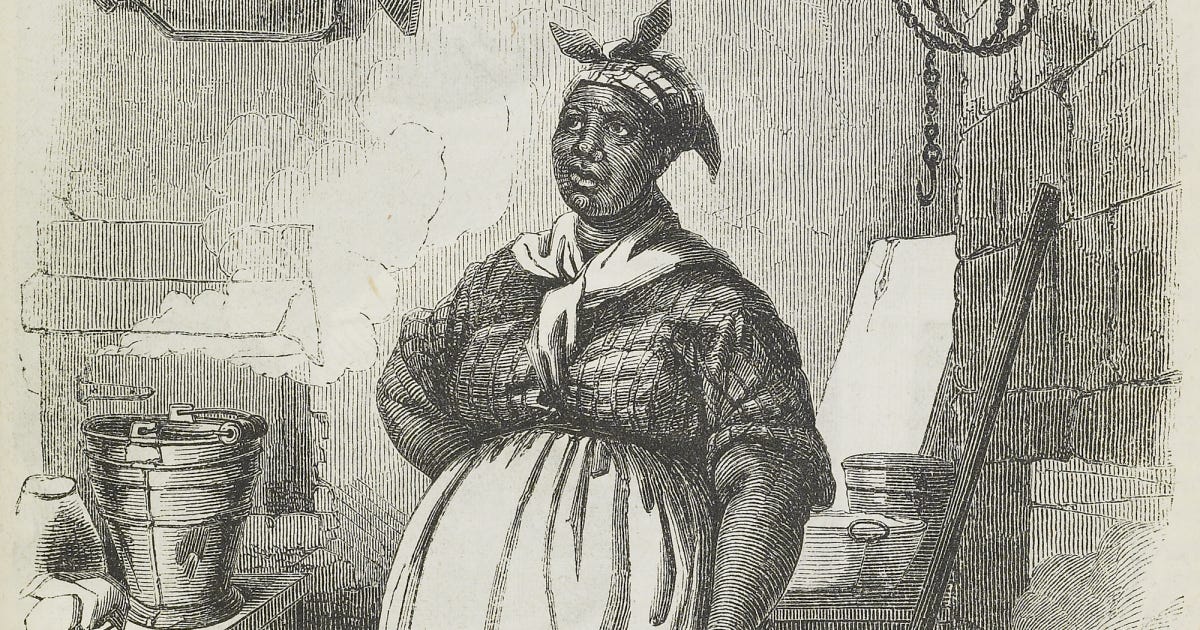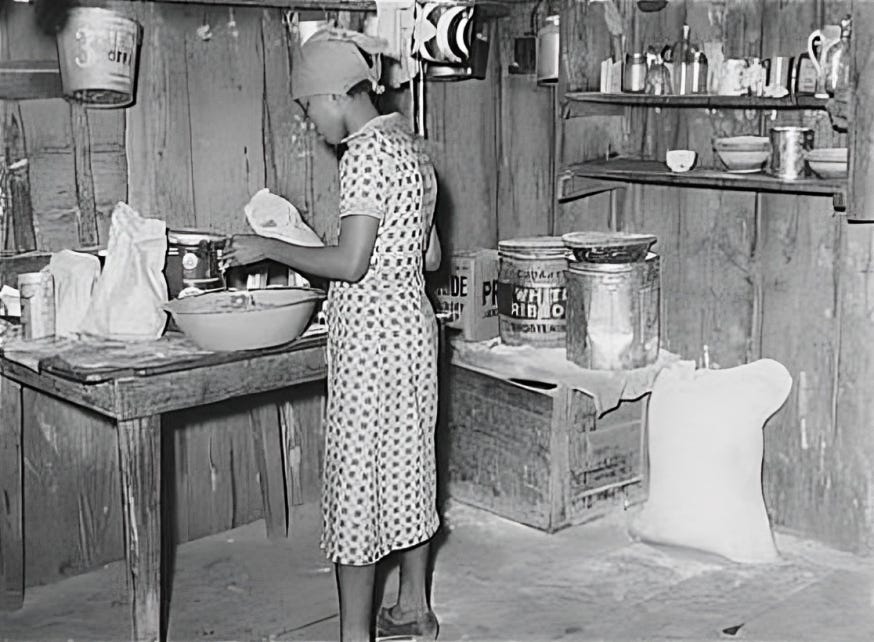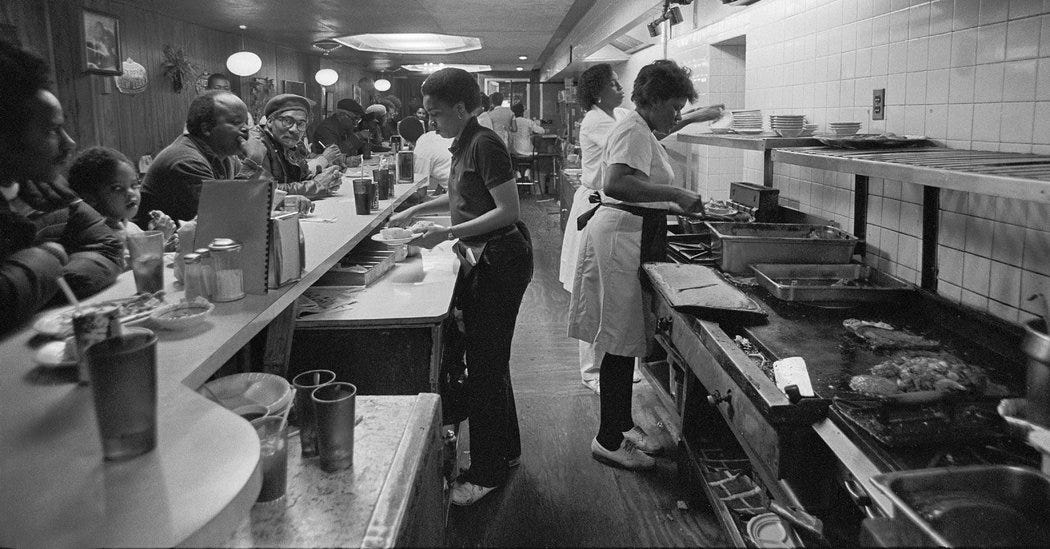If you enjoy these Black History stories and want to keep discovering more, consider becoming a subscriber today. Your support helps me share these important narratives with even more people.
Soul food is more than fried chicken and collard greens. The cuisine represents survival, creativity and a Black community forged through centuries of struggle. While Today we celebrate soul food as a cornerstone of Black American heritage but the full story stretches far across continents and conditions that shaped our history.
“Food tells a story. It tells who we are. Where we came from.” -Jessica B. Harris
Roots Across the Atlantic
Soul food wasn't born overnight. It emerged from the cooking pots of enslaved Africans, forcibly brought from the agricultural communities of West Africa to plantations in the Southern states. In Africa, ingredients like yams, black-eyed peas, rice, okra, millet, sorghum, fish, and flavorful seasoning pastes were daily staples. Those culinary customs weren't recorded in cookbooks but instead passed down orally from family through family and generation through generation.
When enslaved Africans reached American soil, culinary tradition became an act of defiance and necessity. Despite restrictive diets imposed by their Enslavers, they creatively infused African cooking methods of smoking, boiling, slow-roasting to transform simple staples like corn, molasses, rice, and discarded scraps of pork into deeply satisfying meals. Dishes such as gumbo, fried fish, and savory stews topped over a hearty starch emerged from these conditions, reflecting both struggle and resourceful adaptation.
“Soul food is really about artfully making something delicious out of often overlooked or discarded items.” -Adrian Miller
Enslaved Black cooks worked miracles with minimal rations like hog maws, pig feet, chitterlings using native herbs, garlic, onions, and peppers to build flavor from the ground up. Foods like black-eyed peas were crucial proteins. Collards and turnip greens, originally tended in secret gardens, brought needed nutrition. Cornmeal and rice, abundant Southern crops, provided the backbone to nourishing dishes that sustained entire communities.
The Emancipation Proclamation didn't instantly liberate Black Americans from economic hardship, yet their cooking symbolized autonomy and community cohesion. Now sharecropping or tenant farming, Black families continued to rely on ingredients like pork, collard greens, cornbread, and sweet molasses foods that conjured tough memories and maintained traditions. Pork was central, especially in dishes like ham hocks, chitterlings, and neckbones. Cornmeal gave life to hush puppies, bread, and endless creativity.
Food wasn't just fuel—it was strength amid struggle.
Black & Proud
From 1910 to 1970, millions of African Americans headed northward, escaping Jim Crow and chasing new opportunities. When Southern transplants settled into cities like Chicago and Detroit, soul food went with them adapting to their new environments. Fish fries adapted to Great Lakes species and collard greens, fried chicken, catfish, and barbecue became urban staples served by street vendors and small Black-owned business. Southern dishes morphed into "down home cooking," a sustaining connection to their southern roots and heritage amid a brand new world.
By the 1960s, a moment ripe with protest, activism, and expanding Black consciousness ”soul food” became intentionally political. When "soul" entered mainstream America, it was much more than a word or trend: it signified shared struggle and pride. Foods once stigmatized as poverty food were openly embraced, dishes of neckbones, pig feet, and collards served as acts of resistance an “edible Black Power,” affirming identity, belonging, and heritage.
Black churches held Sunday dinners, reinforcing community through cups of communion and bowls of tradition. Black-owned businesses capitalized on soul food’s popularity, and influential cookbooks entered kitchens throughout the country.
“Cooking is a powerful way to heal oneself and to nourish family, community, and culture.” -Bryant Terry
Complications at the Table
Yet, alongside pride came questions. Some worried that reverence for soul food tied Black Americans too closely to poverty, hardship, and inherited negative stereotypes. Health advocates voiced alarm over levels of fat, sugar, and salt. Debate flared over whether wealthy Black folks distancing from soul food were abandoning Black identity or simply recognizing change tastes and economic status. Critics also pointed out oversimplified labels that erased regional variations within Black cooking
But even through complications, the flavors and rituals of soul food remained resilient symbols of the Black community.
Soul Food Today
Soul food today blends innovation with respect for tradition. Modern restaurants reinterpret classics reducing fat, salt, sugar, yet preserving soulful taste. Neo-soul cuisine combines fresh, locally-sourced, seasonal ingredients. The rising popularity of vegan soul reflects shifting attitudes and health consciousness. Chefs creatively incorporate global techniques, presenting soul food at fine-dining tables nationwide.
Still present and powerful are Black churches and gathering spaces, hosting feasts of community and belonging. At family reunions, church potlucks, and cultural celebrations, soul dishes simmer as expressions of history, pride, creative survival, and resilience.
In understanding soul food we discover an enduring truth: every plate served tells the story of our people, our struggle, our redemption, and our triumph and reminds us that food truly is culture, preserved one delicious bite at a time.
Subscribe to my YouTube channel and podcast for bi-weekly episodes and get exclusive content when you become a paid subscriber.
Sources:








